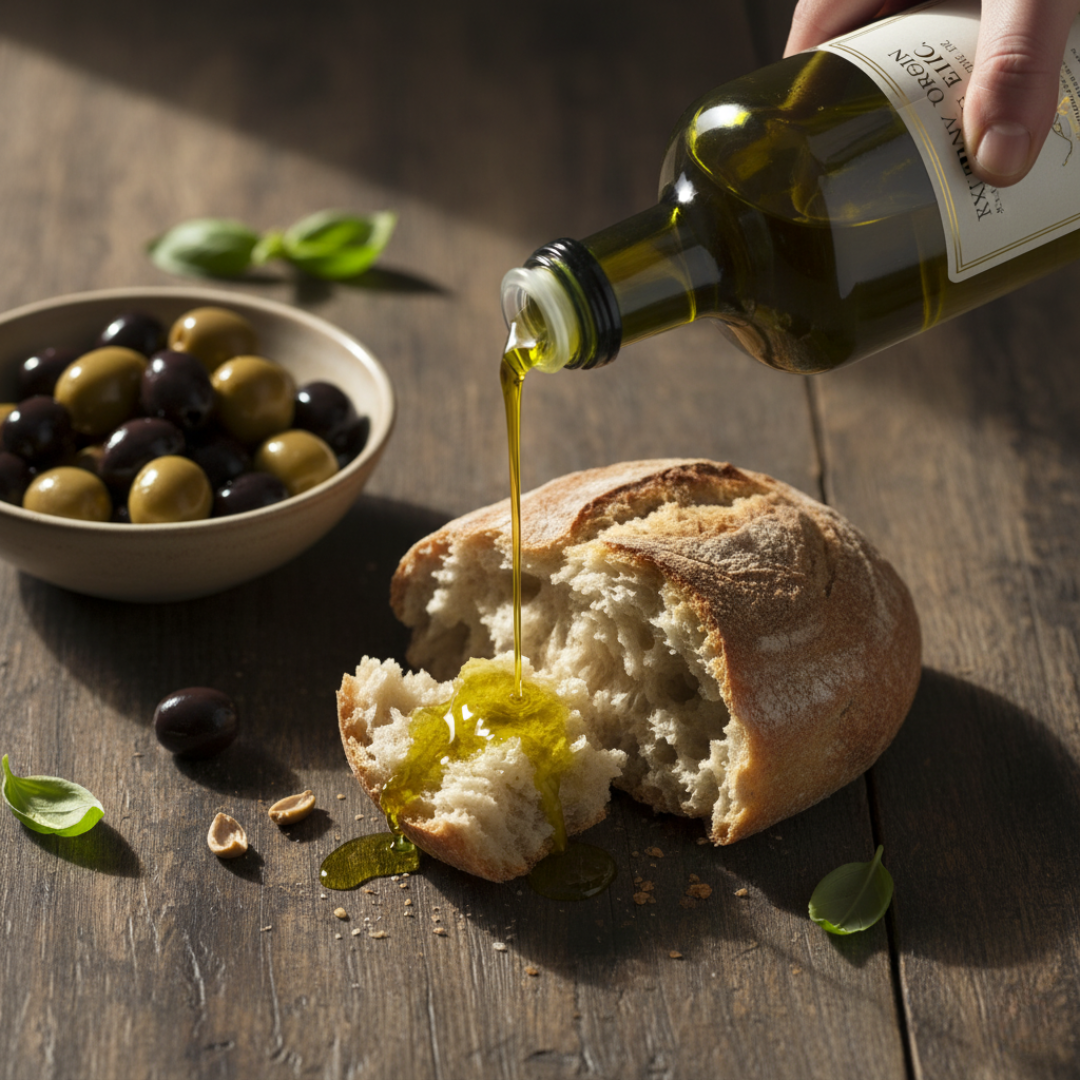
Olive Oil Myths Busted: What You Really Need to Know
Few ingredients are as celebrated - or as misunderstood - as olive oil. Praised as a cornerstone of the Mediterranean diet, olive oil has become a kitchen essential for foodies and health-conscious cooks alike. But with so many buzzwords on labels - extra virgin, cold-pressed, first-press, light, pure - and with myths about cooking temperatures and storage floating around, it’s easy to feel confused.
Let’s bust some of the most common olive oil myths so you can shop smarter, cook confidently, and get the most out of this liquid gold.
1. Myth: “First-Press” Olive Oil Is Better Than Cold-Pressed
The Truth: The term “first-press” is a bit outdated and mostly marketing language today. Traditionally, olive oil was extracted by mechanically pressing olives between stone wheels. The first press produced the best quality oil, hence the term.
Modern olive oil production uses cold extraction rather than pressing, which is a more efficient and hygienic process.
-
Cold-Pressed/Cold-Extracted: Refers to oil made at low temperatures (below 27°C / 80°F) to preserve flavor and nutrients.
-
Extra Virgin: Means the oil meets strict standards for acidity (≤ 0.8%) and passes sensory tests for flavor and aroma.
Bottom line: Look for “extra virgin” and “cold-extracted” on labels rather than worrying about “first-press.”
2. Myth: Olive Oil Can’t Be Used for Cooking
The Truth: This is one of the biggest misconceptions. While olive oil does have a lower smoke point than some refined oils, high-quality extra virgin olive oil is perfectly safe for sautéing, roasting, and even shallow frying.
-
Smoke Point: Around 375–410°F (190–210°C) for extra virgin olive oil - suitable for most home cooking.
-
Best Uses: Sautéing vegetables, roasting chicken, finishing pastas, and drizzling over salads.
Bottom line: Don’t be afraid to cook with EVOO - it’s stable, flavorful, and healthy when used at normal cooking temperatures.
3. Myth: “Light” Olive Oil Is Lower in Calories
The Truth: The term “light” refers to flavor, not calories. Light olive oil is refined, making it lighter in color and taste - but it still has the same calories as regular olive oil.
-
Good for: Baking or dishes where you want a neutral flavor
-
Not good for: Recipes where you want the robust taste and health benefits of extra virgin olive oil
Bottom line: Choose light olive oil for delicate recipes, but don’t expect it to be a “diet” product.
4. Myth: Color Indicates Quality
The Truth: Olive oil can range from pale gold to deep green depending on olive variety and harvest time. Color is not an indicator of quality - taste and aroma are far more reliable measures.
-
High-quality EVOO: Fruity, grassy, sometimes peppery finish
-
Low-quality/refined oils: Bland or flat flavor
Bottom line: Trust your palate and look for reputable producers like Colavita or PDO/PGI-certified oils.
5. Myth: Olive Oil Lasts Forever
The Truth: Olive oil is a fresh product and should be treated like juice - not wine. Over time, it can oxidize and go rancid.
Storage Tips:
-
Buy fresh: Look for harvest or bottling date on the label.
-
Store correctly: Keep in a cool, dark place away from heat and light.
-
Use within 12–18 months: Once opened, try to use within 3–6 months for best flavor.
Bottom line: Buy in quantities you’ll use within a few months and keep bottles tightly sealed.
6. Myth: Imported Olive Oils Are Always Fake
The Truth: While there have been cases of fraud in the olive oil industry, many reputable brands maintain strict standards for authenticity.
-
Look for: PDO/PGI seals, harvest dates, and traceable batch numbers
-
Trusted Brands: Colavita, Frantoia, Lorenzo, and other well-known European producers
Bottom line: Buy from trusted retailers (like Pick and Get) who source directly from reputable importers.
Conclusion
Olive oil is one of the healthiest, most versatile ingredients you can keep in your pantry - but it’s important to separate fact from fiction. By choosing high-quality extra virgin olive oil, storing it properly, and using it confidently in cooking, you’ll enjoy all the flavor and health benefits this Mediterranean staple has to offer.
Explore Pick and Get’s curated collection of authentic Italian and Spanish olive oils - cold-extracted, high-quality, and perfect for every dish.








